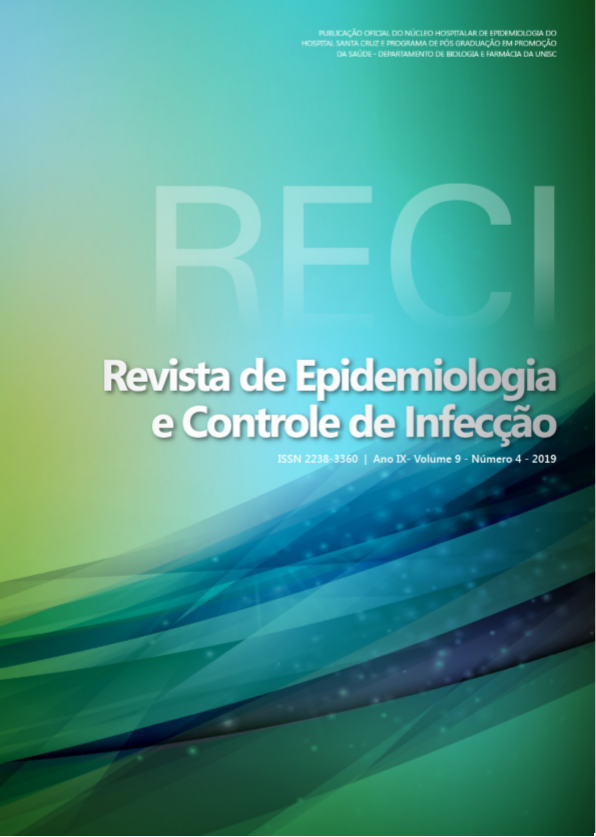Epidemiological characteristics of patients with sepse in intensive therapy unit
DOI:
https://doi.org/10.17058/.v9i4.13442Keywords:
Epidemiology. Intensive Care Units. Sepsis.Abstract
Background and Objectives: Despite the novelties related to the early diagnosis and microbial screening of sepsis cases, it is necessary to understand the clinical-epidemiological aspects of the health services in order to define the specificities of the patients affected by Intensive Care Units (ICUs). In this context, the objective is to describe the epidemiological characteristics of patients with sepsis in the ICU. Methods: This is an exploratory-descriptive, retrospective, documental study, with a quantitative approach, carried out between May and July 2018, in a teaching hospital in the Northern Zone of the State of Ceará. The records of patients who presented sepsis at the ICU of the referred hospital were used as data source, reaching a sample of 62 charts for analysis. The collected data were stored in MicrosoftExcel and OriginLab 8 programs for later construction of graphs and tables for information analysis. Results: The cases were predominantly male, resident in surrounding municipalities and young adults aged 19 to 39 years. Cranioencephalic trauma and polytraumatism were the initial diagnoses that prevailed. Gram-positive bacteria had a higher prevalence, beating gram-negative bacilli and fungi. The most commonly used antimicrobials were Cefepime and Vancomycin. The evolution of infections was associated with factors such as: patients' health status; use of invasive devices and long period of hospitalization. Conclusion: The information obtained in this research indicates that epidemiological data play a crucial role in the application of new resources, technologies and treatments. Such knowledge will allow the development of strategies and behaviors directed at quality in intensive care.Downloads
Downloads
Published
How to Cite
Issue
Section
License
The author must state that the paper is original (has not been published previously), not infringing any copyright or other ownership right involving third parties. Once the paper is submitted, the Journal reserves the right to make normative changes, such as spelling and grammar, in order to maintain the language standard, but respecting the author’s style. The published papers become ownership of RECI, considering that all the opinions expressed by the authors are their responsibility. Because we are an open access journal, we allow free use of articles in educational and scientific applications provided the source is cited under the Creative Commons CC-BY license.


